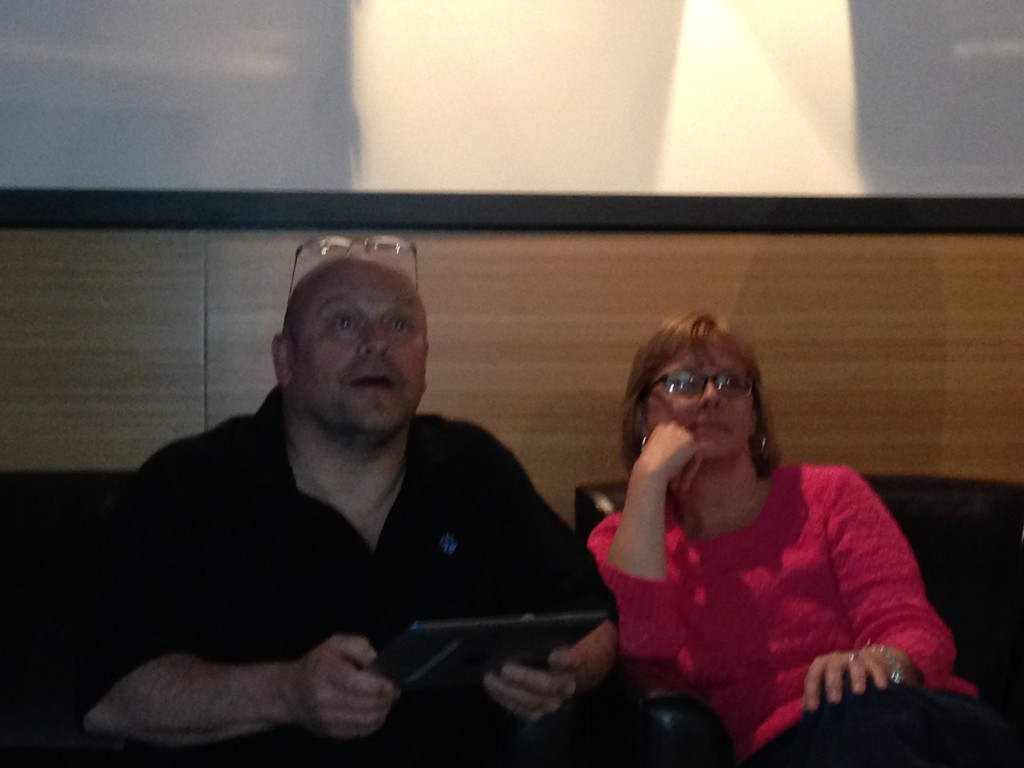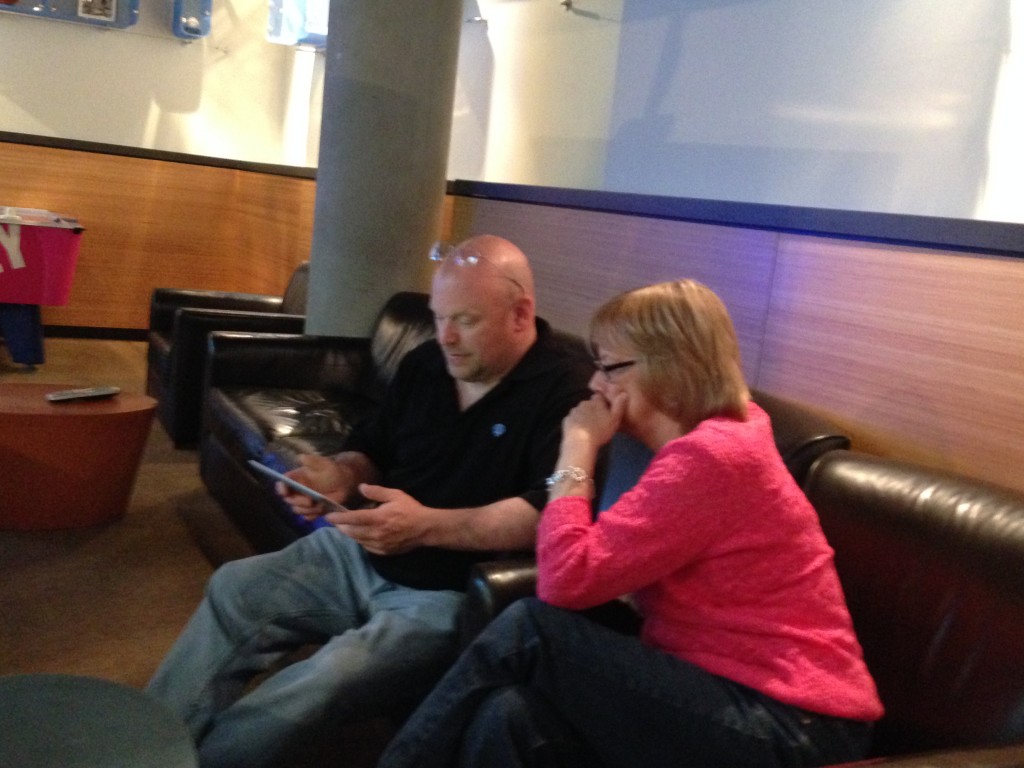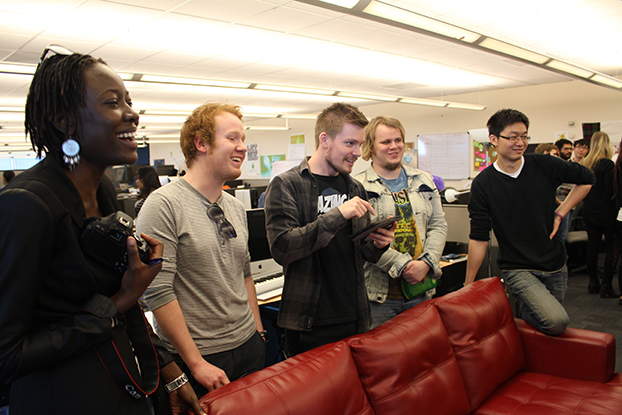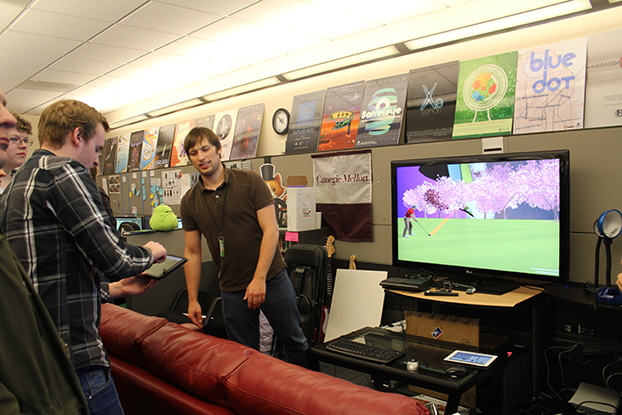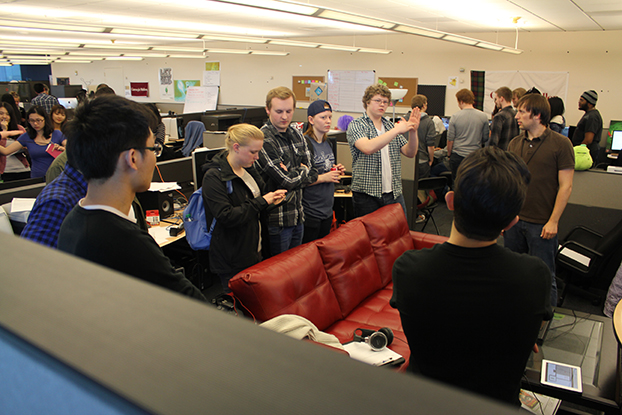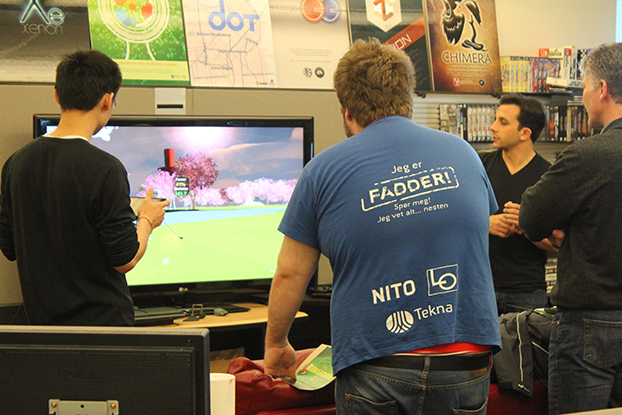April 21 – 25 2014
We dedicated this week to preparing for the premier of the beta of our game, both online and in person at Electronic Arts’ headquarters.
To prepare for our live demo, we first focused on fixing the bugs that made the game unplayable and adding features that were absolutely necessary. We fixed a crucial function that let players preview where their ball would go, decreasing how taxing this was on on our system. After watching our playtesters last week, we also added a feature that let players re-start their shot, hoping this would reduce player frustration.
In terms of art, we pushed to give players a sense of the near final experience. We replaced the traditional golf flags with our own strange and colorful ones, added better clouds and skyboxes, and finally addressed low-priority features, including the load screens.
We also implemented our third and final level. This level had more holes and more complex gameplay than other levels and immediately revealed the limits of our system. While this level wasn’t nearly polished, we hoped it would show how far our concept would go.
On the day of softs, we were excited to show our game off to EA employees. Standing alongside our ETC classmates in the main atrium of EA’s headquarters, we hosted another championship of our first level and posted a leaderboard with the testers’ best scores. These tests reminded us of the bugs we will need to fix and features we will need to add before finishing the game.
For our online opening, we polished our website, adding more information about our game, the technology underneath it, and our design goals. We created two videos, a 30-second introduction to our game and a longer 3-minute overview of our work to date.
In our last two weeks, we’ll focus on a handful of critical bugs and features. Once again, this will likely mean scaling back our ambitions. Finalizing our third and final level will have to take a back seat to making our first two levels look and feel amazing and ensuring that the EA team has what they need to publish our game later in the year.
